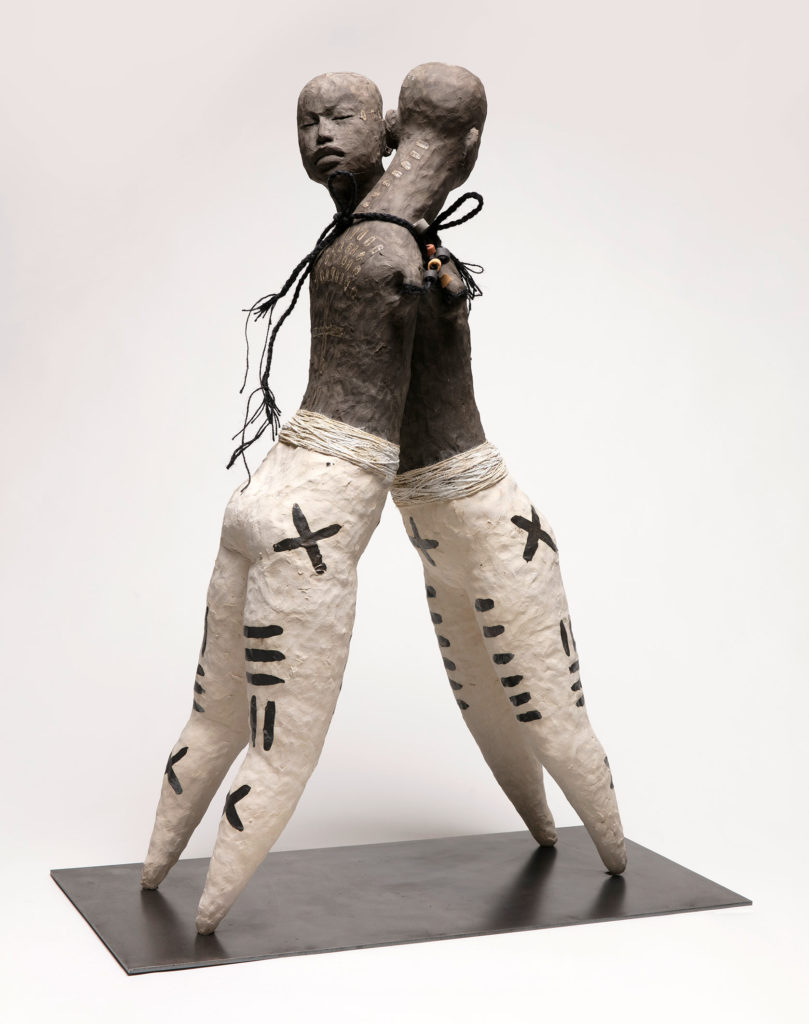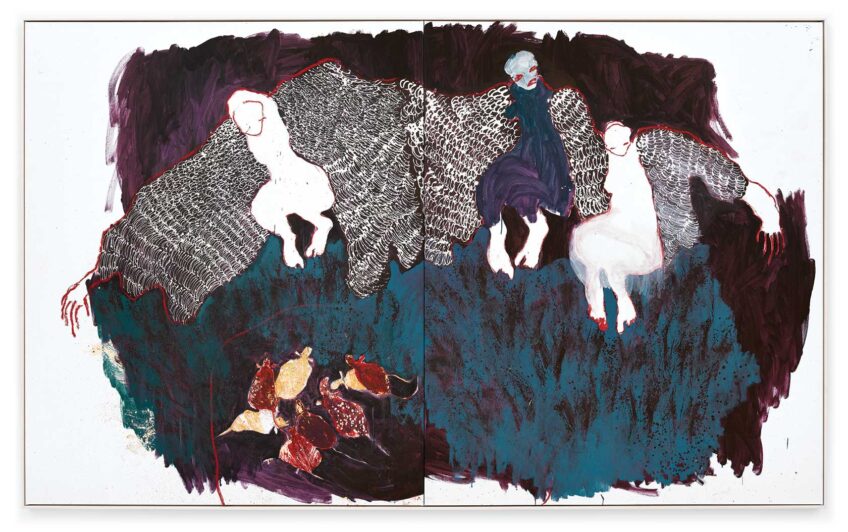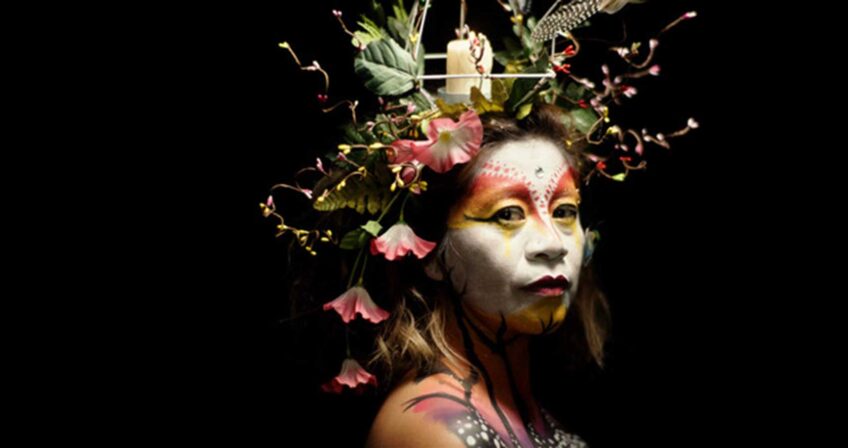
Dynamic sculpture artist Rose B. Simpson opens her first solo show in Boston at the ICA, running Aug. 11 through Jan. 29. Utilizing ceramic sculpture, performance, installation, metalwork, writing and other media, Simpson reflects on the human condition, particularly under colonial rule.
“Simpson is one of the most compelling voices in contemporary sculpture who consistently asks urgent questions about where we find ourselves in the world today through inventive techniques and materials,” says Jeffrey De Blois, associate curator and publications manager and the organizer of the exhibition. “We look forward to sharing her powerful work with Boston audiences.”

Rose B. Simpson, Root A, 2019. Ceramic, glaze, linen, jute string, steel, and leather. 71 1/2 x 20 1/2 x 16 inches (181.6 x 52.1 x 40.6 cm). Rennie Collection, Vancouver. Courtesy the artist and Jessica Silverman, San Francisco. PHOTO: John Wilson White. © Rose B. Simpson
“Rose B. Simpson: Legacies,” showcases 11 of the artist’s works, including some new pieces on view for the first time. The centerpieces of the exhibition are Simpson’s signature ceramic figures, part of a matrilineal clay work legacy and, appropriately, often depicting female subjects. The figures range in scale from life size to miniature and intimate, each sculpture probing consciousness and lived experience.
Simpson was born in Santa Clara Pueblo, New Mexico and still lives and works there, now teaching her own daughter how to use to creativity to navigate the world. She holds a BFA from the Institute of American Indian Art, an MFA from Rhode Island School of Design and an MA in Creative Writing from the Institute of American Indian Art.
“My life-work is a seeking out of tools to use to heal the damages I have experienced as a human being of our postmodern and postcolonial era — objectification, stereotyping and the disempowering detachment of our creative selves through the ease of modern technology,” Simpson says in an artist statement.

Rose B. Simpson, Legacy, 2022. Clay, glaze, grout, and found objects. Two parts: one part: 39 1/2 x 9 1/2 x 8 inches (100.3 x 24.1 x 20.3 cm); one part: 28 x 6 x 6 1/2 inches (71.1 x 15.2 x 16.5 cm). Private collection, Boston. Courtesy the artist and Jessica Silverman, San Francisco. PHOTO: Addison Doty. © Rose B. Simpson
In “Brace,” two figures of clay, steel, glaze and twine lean against each other, creating a triangle shape. The armless figures support each other and look out across each other’s shoulders as though scouting for threats. Here, ancestry and heritage provide a bolster for contemporary issues, with past and present holding each other up.
“Root A” stands 71 inches tall and shows a grounded figure with arms crossed and a circular shape connecting the head to the body. According to the artist, this figure stands tall “for justice, healing and rehabilitation” in the face of significant strife, perhaps even an apocalyptic landscape. In this way, and frequently in her work, Simpson illustrates how ancestral tools and practices can be used to overcome difficulty.
“These tools are sculptural pieces of art that function in the psychological, emotional, social, cultural, spiritual, intellectual and physical realms,” says Simpson. “The intention of these tools is to cure; therefore, my hope is that they become hard-working utilitarian concepts.”







